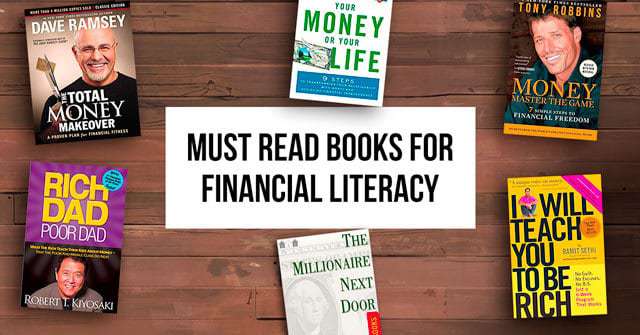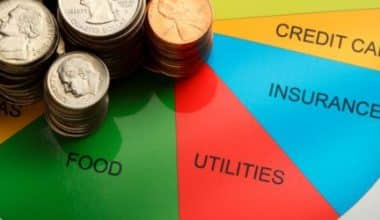What’s more exciting than playing your favorite video game or reading your favorite storybook? It’s time to start reading financial literacy books! I know what you’re thinking: “Financial literacy?” That sounds tedious! But wait a minute, because learning about money can be a lot of fun and rewarding. Consider this: with money, you can buy all kinds of cool things, such as the latest gadgets or even a trip to your favorite location! And the more you understand money management, the better you will be able to make it work for you. So, whether you’re a student or an employee, reading the top financial literacy books for beginners and young adults is a great way to get started on your path to financial freedom and success.
Benefits of Reading Financial Literacy Books
Reading financial literacy books for beginners and young adults is a great place to start if you want to improve your financial life. It has a lot of advantages. Personal finance concepts can be better understood by reading financial literacy books. These books can provide you with the information you need to make better financial decisions. It can give you advice on everything from budgeting and save to investing and retirement planning.
It can also aid in the development of better financial habits and behaviors. You may be more likely to increase your net worth by learning about personal finance and money management.
Best Financial Literacy Books
Though financial literacy has become a hot topic in recent years, it remains one of the most difficult topics to broach. For starters, there are so many layers to peel back—personal finances, investing, loans, budgeting, oh my! —and with inflation on the rise and a recession looming, most people won’t even bother to look into it. Even if you have no desire to be an investor, you can never have too much knowledge, and perhaps one of these best top financial literacy books will help you manage your hard-earned money better.
#1. Rich Dad, Poor Dad by Robert T. Kiyosaki
You can’t rely on the school system to teach your children about money. This is arguably the most popular personal finance book. It outlines the money lessons Kiyosaki learned from his two fathers—his father and a friend’s father, who is referred to in the book as the “rich dad.” Kiyosaki tells readers why they don’t have to make a lot of money to be wealthy, explains the difference between an asset and a liability, and challenges the notion that a house is an asset.
#2. The Total Money Makeover by Dave Ramsey
The snowball method is a debt-reduction strategy in which you pay off your smallest debts first, then use the money you saved to pay off your larger debts. Nothing is worse for your financial health than a seemingly insurmountable amount of debt. And if you don’t have a strategy for dealing with it, you might find yourself in an even deeper financial hole.
#3. Broke Millennial: Stop Scraping By and Get Your Financial Life Together by Erin Lowry
How to get “financially naked” with your partner to discover his or her (debt) number. Broke Millennial is part of a three-book series that advises millennials on how to make the best financial decisions. It is aimed at those aged 20 to 30 who are constantly cash-strapped and can’t figure out how to make their money work for them. Broke Millennials also explains how to deal with awkward situations in real life (i.e. Many millennials struggle with what to do when they can’t afford to split a fancy dinner bill evenly.
#4. Clever Girl Finance by Bola Sokunbi
How to Begin and Succeed with a Side Hustle. Maybe you’re not drowning in debt and your finances are just fine. This book may be able to assist you in taking things to the next level. Bola Sokunbi, a financial expert, explains how you can better monitor your expenses, create a budget, and stick to it so that even if you don’t make a lot of money, you still have money in the bank.
#5. Money: Master The Game by Tony Robbins
Money: Master The Game lays out seven simple steps to financial freedom, based on Tony Robbins’ interviews with the world’s best billionaire investors. Tony Robbins spent ten years researching this book.
Following the 2008 financial crisis, he resolved to assist ordinary people in securing a bright future. He assembled their best strategies after interviewing several billionaire financial legends, including Ray Dalio, Warren Buffett, and Jack Bogle. Everything from mindset shifts to saving tips to asset allocation is covered in the book.
#6. The Intelligent Investor by Benjamin Graham
The Intelligent Investor defines value investing as a strategy for generating consistent, long-term profits by ignoring the current market and selecting companies with high intrinsic value.
According to Warren Buffett, this is the best investment book ever written. It is based on classes taught by Benjamin Graham, which Warren Buffett took as a young student. Value investors seek out companies with strong fundamentals and purchase their stock at a discount. Then all they have to do is wait. Their true worth will eventually be revealed. A true, time-honored classic.
#7. The Little Book That Beats The Market by Joel Greenblatt
The Little Book That (Still) Beats The Market is a step-by-step guide for using a simple mathematical formula to buy stocks that guarantees long-term profits.
Joel Greenblatt is a financial legend. From 1986 to 2006, his investment firm, Gotham Funds, had an annual return of more than 40%. Joel has used his simple formula to turn Benjamin Graham’s value investing approach into a system that only needs to be updated once a year. He wrote it down in 2005 to pass it down to his children. This is your best bet if you’re looking for a specific, low-hassle investment strategy.
#8. The Millionaire Fastlane by MJ DeMarco
The Millionaire Fastlane exposes the flaws in the old “get a degree, get a job, work hard, retire rich” model, redefines wealth, and shows you how to retire young.
This book has to have the most deceptive title in the world. It is not a get-rich-quick scheme. Instead, it’s a story about perseverance, bravery, risk-taking, and creative thinking. MJ DeMarco knew he wanted to be rich after seeing a man in a Lamborghini when he was a teenager, but he didn’t want to slave away for 40 years to get there. He retired as a multi-millionaire at the age of 33 after launching, selling, and re-buying his own company. An inspiring read!
#9. From The Rat Race to Financial Freedom
The book attempts to teach the true meaning of “financial freedom” in the most straightforward manner possible. Manoj claims that we are all trapped in a mindless rat race (a way of life in which people are trapped in a fiercely competitive struggle where they want to earn more and more money). He goes on to say that to escape the rat race and achieve financial freedom, one must take control of his finances and create a personal financial plan.
Read Also: Tips on How to Stop Spending Money
Financial Literacy Books for Beginners
Each of these financial literacy books for beginners has influenced my financial success, from resetting my attitude toward debt and spending to understanding what it takes to build wealth.
#1. The Barefoot Investor by Scott Pape
The Barefoot Investor is a no-nonsense guide to taking control of your finances with a simple system to eliminate debt, live in the moment, and retire in peace written by an Australian farm boy. Scott Pape is the most trusted personal finance expert in Australia. His book has sold over a million copies.
Despite growing up on a farm, Pape aspired to become wealthy through stock trading. That did not pan out. He returned to his farm and now uses the simple life as a metaphor for money management. The book teaches you how to take control of your money in three stages: planting, growing, and harvesting. This is one of the best books on financial literacy for beginners.
#3. The One-Page Financial Plan by Carl Richards
The One-Page Financial Plan eliminates the burden of financial planning for the less disciplined by allowing you to plan your entire financial future on a single page. Carl Richards has worked as a financial advisor for Wells Fargo, Merrill Lynch, and others for over 40,000 hours in the last 20 years. Some of his sketches on Instagram went viral. On a single piece of paper, they illustrated the ideas that helped him and his wife plan their finances. His book will teach you how to do the same.
#4. The Richest Man in Babylon by George S. Clason
My all-time favorite personal finance book is The Richest Man in Babylon.
Rather than taking a purely instructional approach, as many books do, The Richest Man in Babylon employs parables to demonstrate financial concepts such as frugality, financial planning, and net worth building.
If you’ve ever heard the expression “pay yourself first” but aren’t sure what it means, read this book first. This book is also very easy to read, making it an excellent starting point for teaching your children about money.
#5. The Millionaire Next Door by Thomas J. Stanley
What image comes to mind when you think of a millionaire? For the majority of us, it’s most likely a celebrity or professional athlete flaunting their wealth through extravagant lifestyles.
Surprisingly, those individuals constitute a minority among America’s wealthy.
The Millionaire Next Door is an intriguing look at who makes up the majority of millionaires in the United States, as well as the seven common traits they all share.
#6. I Will Teach You to Be Rich” by Ramit Sethi
In his landmark New York Times and Wall Street Journal bestseller, “I Will Teach You to Be Rich,” Ramit Sethi, dubbed the “wealth wizard” by Forbes, outlines a 6-week program for increasing your income and saving for retirement.
Despite its target audience of millennials and newcomers to finance, this book is a must-read for anyone new to the FIRE (financial independence, retire early) movement. The book teaches you how to spend money on things that make you happy by ruthlessly weeding out the things that don’t. It also describes how to create a “conscious spending plan.”
Read Also: AARON ROSS NET WORTH 2023(Updated!)
Financial Literacy Books for Young Adults
With little preparation, young adults face enormous financial challenges. They must deal with limited incomes, student loan debt, credit building, and other issues, often with only the most basic financial knowledge. If you find yourself in this situation, you may need to educate yourself, and you may not have much time to do so. These financial literacy books for young adults will help you get started.
#1. How to Money By Kathryn Tuggle and Jean Chatzky
Anyone looking to improve their understanding of personal finance will find How to Money to be an invaluable resource. The authors offer practical advice on a variety of personal finance topics, including budgeting, saving, investing, and debt management.
This is one of the financial literacy books intended for young adults to learn about personal finance. It gives them the foundation they need to build a better financial future and avoid the pitfalls that put so many young people in debt before they even begin.
#2. I Want More Pizza By Steve Burkholder
Steve Burkholder’s I Want More Pizza focuses on the fundamentals of money management, such as budgeting, saving, investing, and credit. It also offers a wealth of practical advice on topics such as finding work, applying for scholarships, and taking advantage of student discounts.
#3. Broke Millennial By Erin Lowry
Erin Lowry’s Broke Millennial is an insightful and practical guide to financial success for young adults. The book is chock-full of useful financial advice and tips, ranging from budgeting and saving to investing and debt management.
#4. The Millionaire Next Door by Thomas J. Stanley.
In his book, he discusses the characteristics of the wealthy, and how the wealthy can be someone like your neighbor, even if you don’t realize it. This book demonstrates to readers that anyone, not just multimillionaires living in massive mansions with private planes, can retire wealthy.
This is one of the best financial literacy books for graduation gifts because it will cause you to reconsider what it means to be wealthy, which is essential to understand at a young age.
#5. The Simple Path To Wealth by JL Collins
JL Collins wrote The Simple Path To Wealth, which is one of the most popular and best financial literacy books for young adults available. Collins’ book covers a wide range of important financial topics, including how to avoid debt, how to build wealth, what the 4% rule is and how to use it to your advantage, and much more.
This is a simple book to read, and it simplifies complicated personal finance topics. Many people have stated that JL Collins’ website and book were instrumental in their ability to retire early.
What is the 4 main financial literacy?
Banking, budgeting, debt, credit management, and investing are some of the fundamentals of financial literacy and their practical application in everyday life.
What books should I read for financial knowledge?
- Rich Dad Poor Dad by Robert T. Kiyosaki.
- The Barefoot Investor by Scott Pape.
- The One-Page Financial Plan by Carl Richards.
- Money: Master The Game by Tony Robbins.
- The Intelligent Investor by Benjamin Graham.
- The Little Book That Beats The Market by Joel Greenblatt.
What are the 5 components of financial literacy?
Financial education reviews the five pillars of financial literacy.
- Earn.
- Invest and save.
- Protect.
- Spend.
- Borrow.
Who has the best financial literacy in the world?
Australia, Canada, Denmark, Finland, Germany, Israel, the Netherlands, Norway, Sweden, and the United Kingdom have the highest financial literacy rates, with approximately 65 percent or more of adults being financially literate.
What is the 10-20-30 rule of money?
This budgeting rule involves allocating 50% of your after-tax income to mandatory living expenses or needs, 30% to wants, and 20% to savings and debt repayment.
What is the 50-20-30 rule?
The concept is to divide your income into three categories, spending 50% on necessities, 30% on desires, and 20% on savings. Learn more about the 50/30/20 budget rule and whether it is appropriate for you.
Conclusion
These are, in our opinion, the best financial literacy books for beginners and young adults of all time for beginning to master money in your life.
Whether you’re recovering from a bad turn of events, suffering from bad financial habits learned as a child, or simply not good at math, reading these books will help you create more financial breathing room in your life.
Related Articles
- Financial Literacy Tests to Track your Progress Efficiently(+ quick guide and tips)
- Financial literacy: All you need to know (+free ebooks)
- FINANCIAL LITERACY FOR KIDS: BASIC LESSONS AND ACTIVITIES FOR ALL GRADES
- FINANCIAL EDUCATION: Importance and How to Get Started (+ free courses)
- TOP 17+ THINGS TO SELL TO MAKE MONEY FAST IN 2023






